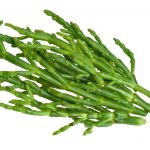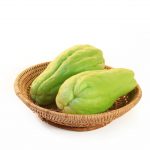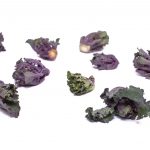In a recent post, “Culinary Forecast: Food Trends, 2018 – Part Three” I mention that we’re going to back to basics this coming year. As consumers become more aware of the environmental impact of our culinary tastes, it’s not enough to pay attention to food waste practices and farm fresh restaurant philosophies. We want transparent supply chains and ethically sourced ingredients. We want to know exactly what’s in each dish and how it’s been handled.
Back to Basics
One result of this increasing attention to detail is a back-to-basics movement. We can re-work classics, return to old standbys, and simplify the more involved menus. This means fewer ingredients. And fewer ingredients mean many meals can be less costly, easier and faster to prepare, and will be easier for our servers to talk about when asked the tough questions by food-savvy attendees with dietary restrictions and food allergies.
I discussed some of this back in July with my call-to-action post on Banishing Boring Banquets. Giving our attendees the best possible experience doesn’t have to mean we provide fancy, complicated menus. In August, I suggested that Meeting Menu Makeovers can be creative without complexity. As event professionals it can be easy to get caught up in making everything grand, when we could focus on serving the basics with a twist. Last August, I also shared, ”Basics Aren’t Boring – It’s Foodimentary.”
Fun Fruits & Veggies
More healthful food options and other health-supporting activities for attendees are a big part of the 2018 food trends. Fruits and veggies are great place to start.
 Donut Peaches
Donut Peaches
Round and squat with a dimpled center, these peaches actually resemble a donut. They won’t fool anyone at the breakfast buffet, but can be just interesting enough to invite a snicker. Just like any white fleshed peach, these little produce prizes are great raw, in salsa, or seared and served with French toast.
 Sea Beans
Sea Beans
They sound like they should live in kelp beds or twine their way around deep sea corals, but sea beans are local to Amazon rivers and carried to ocean waterways. They’re popular in Europe and Asian countries, but are new to the U.S. by only a few years. As long, slender spindles with some crunch, they are the perfect salad green, stir-fry topper, or high-end garnish.
Kalettes
Common to Trader Joe’s and Whole Foods, these nutty flavored sweet-greens are growing in popularity. Despite being a veggie hybrid, they aren’t met with abomination accusations. Instead, they have curly green leaves from kale, and cabbage-like green and purple sprout of brussels sprouts. Add them to a salad or serve garlic-roasted kalettes.
 Chayote Squash
Chayote Squash
Pronounced chi-yo-tay, this squash is common to Hispanic cuisine, familiar in Asian cooking and making its way into mainstream American cooking, beginning with the Caribbean-influenced areas of the South. Not only does this multi-cultural gourd have a mild taste that can be worked into many dishes, but it also has an edible pit, giving it a better food waste reduction score. It’s great raw, cooked, year-round, and is suitable for salad, baked, grilled, roasted, steamed, or stuffed.
These should give you a starting place. Remember, creativity doesn’t end just because we limit a dish to one to three ingredients with little to no seasoning, easy preparation, and a simple arrangement.
What will be some of your go-to back-to-basic dishes this coming year?




